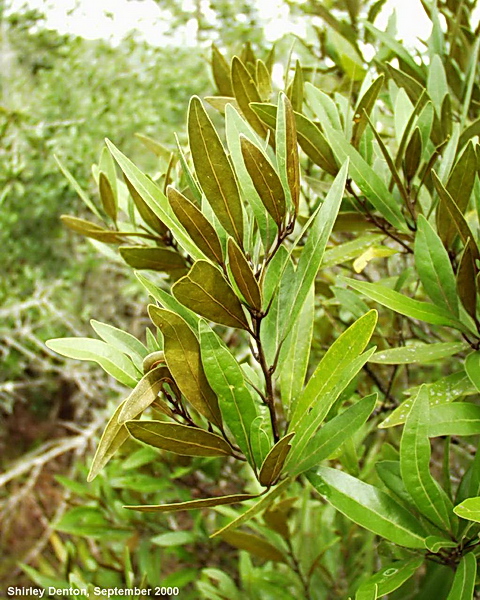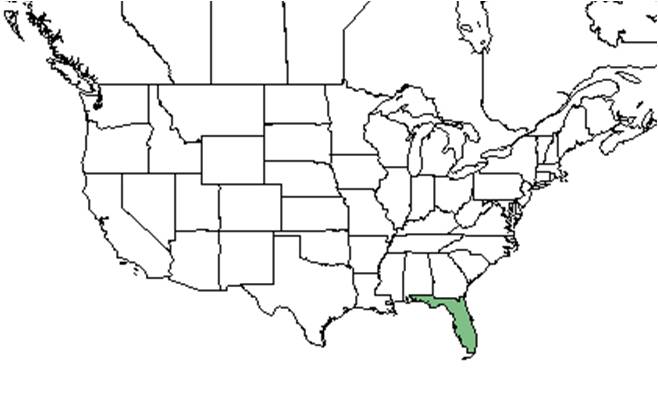Difference between revisions of "Persea humilis"
KatieMccoy (talk | contribs) |
KatieMccoy (talk | contribs) (→Description) |
||
| Line 25: | Line 25: | ||
<!-- Basic life history facts such as annual/perrenial, monoecious/dioecious, root morphology, seed type, etc. --> | <!-- Basic life history facts such as annual/perrenial, monoecious/dioecious, root morphology, seed type, etc. --> | ||
A description of ''Persea humilis'' is provided in [http://efloras.org/florataxon.aspx?flora_id=1&taxon_id=233500901 The Flora of North America]. | A description of ''Persea humilis'' is provided in [http://efloras.org/florataxon.aspx?flora_id=1&taxon_id=233500901 The Flora of North America]. | ||
| + | |||
| + | The leaf is shiny green on the top, with dense rusty-red hairs on the bottom<ref name="floridata">. These hairs on the lower side of the leaf help reduce water loss. | ||
==Distribution== | ==Distribution== | ||
Revision as of 13:33, 18 February 2016
| Persea humilis | |
|---|---|

| |
| Photo by Shirley Denton (Copyrighted, use by photographer’s permission only), Nature Photography by Shirley Denton | |
| Scientific classification | |
| Kingdom: | Plantae |
| Division: | Magnoliophyta - Flowering plants |
| Class: | Magnoliopsida – Dicotyledons |
| Order: | Laurales |
| Family: | Lauraceae |
| Genus: | Persea |
| Species: | P. humilis |
| Binomial name | |
| Persea humilis Nash | |

| |
| Natural range of Persea humilis from USDA NRCS Plants Database. | |
Common name: silk bay
Contents
Taxonomic notes
Also called scrub bay[1].
Description
A description of Persea humilis is provided in The Flora of North America.
The leaf is shiny green on the top, with dense rusty-red hairs on the bottomCite error: Closing </ref> missing for <ref> tag.
Phenology
Seed dispersal
Seed bank and germination
Fire ecology
Pollination
The following Hymenoptera families and species were observed visiting flowers of Persea humilis at Archbold Biological Station (Deyrup 2015):
Colletidae: Colletes brimleyi, C. nudus
Halictidae: Augochlorella aurata, Augochloropsis metallica
Sphecidae: Bicyrtes quadrifasciata, Cerceris fumipennis
Vespidae: Euodynerus apopkensis, Polistes metricus, Pseudodynerus quadrisectus
Use by animals
Diseases and parasites
Conservation and Management
Cultivation and restoration
Photo Gallery
References and notes
Deyrup, M.A. and N.D. 2015. Database of observations of Hymenoptera visitations to flowers of plants on Archbold Biological Station, Florida, USA.